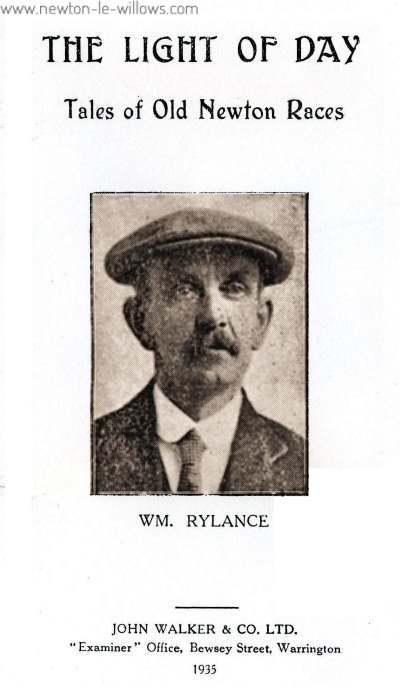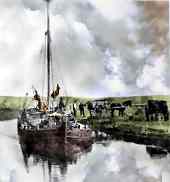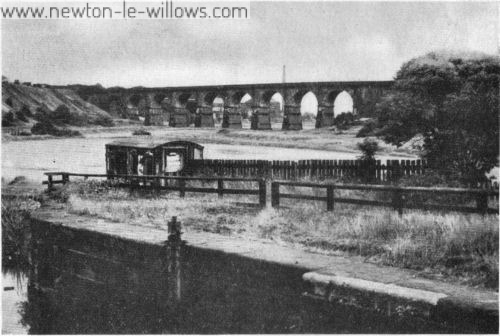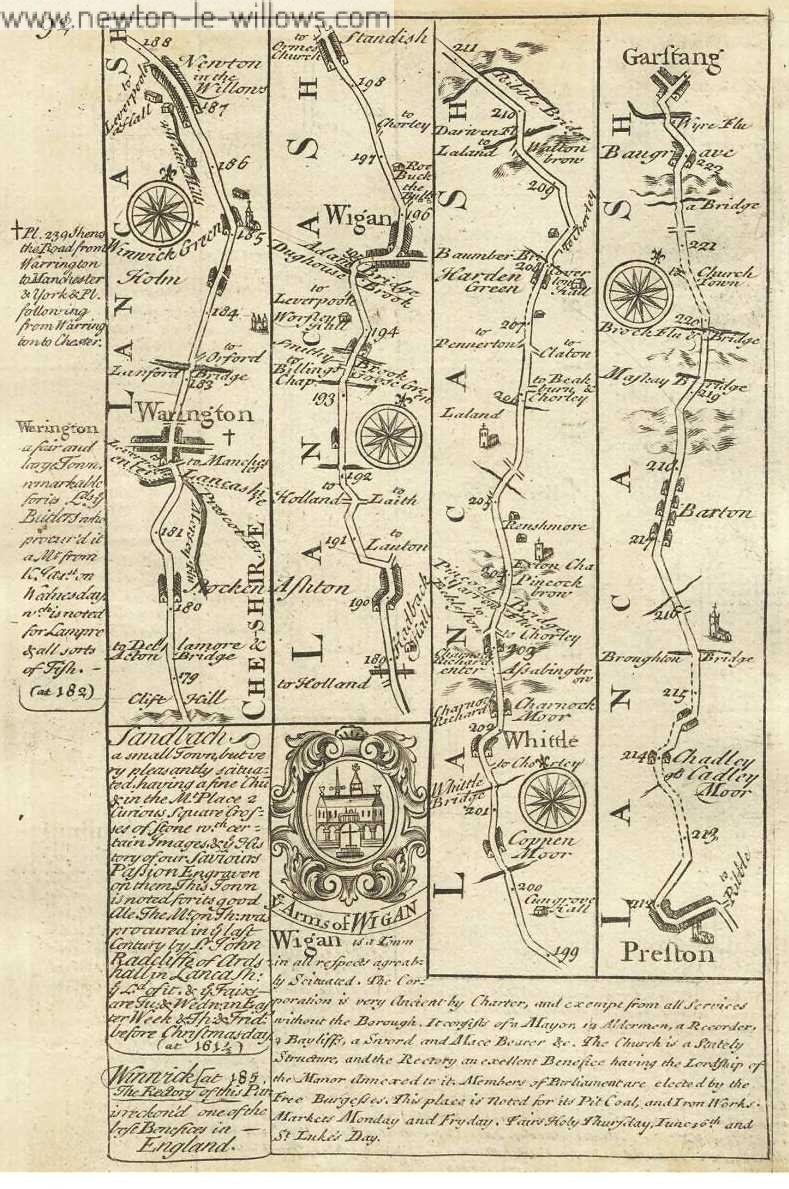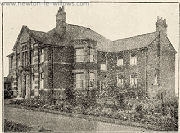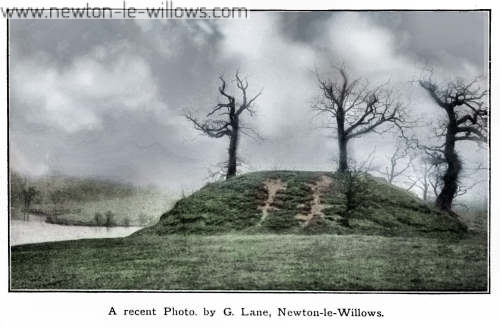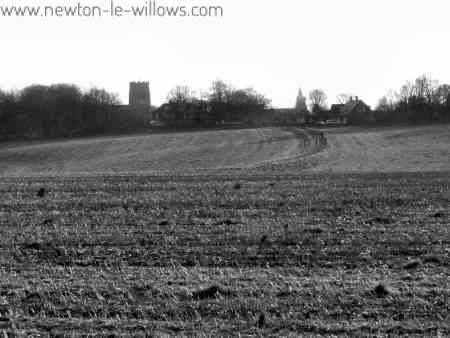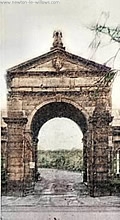The following text is taken from a magazine I was recently sent a copy of, it included a brief but fairly full account of the Battle of Winwick Pass, the description of the historical events at Winwick preceded the main section of the magazines article, which was to set the scene historically for a Miniature WarGaming event of the Battle.I could have re-written the article to remove the War Game referances, but I decided to leave them in, because the details for numbers of soldiers, horses etc add to the…
Read More >>Tag: Newton-le-Willows
Tales of Old Newton Races
FOREWORD. This little book, written by Mr. William Rylance, will gain in value as the years roll on. The customs he records have changed, are changing, and will continue to change; and these descriptions of what has been, presented in graphic language by one who had first-hand knowledge of the things of which he spoke, will provide reliable material for the future historian of our social life. Moreover, the stories have a present interest and worth. They cannot but make a strong appeal to all who love to read of…
Read More >>Sankey Navigation – The first canal
Sir Richard Western (1591-1652) built the Wey Navigation between the Thames at Weybridge and Guildford. In the 15 miles, there were 7 miles of artificial cut, 10 locks and 4 weirs. The fall to the Thames was 86 ft. This navigation was opened in 1653 (concurrently with the first turnpike Acts), and is a typical river improvement of the time. John Hadly opened the Aire and Calder navigation from Weeland to Leeds and Wakefield in 1703, which Smeaton extended to Halifax in 1764. A similar project was envisioned for the…
Read More >>Sites of Interest: East of Newton-le-Willows
Sites of Interest to The East of Newton-le-Willows Site number 01 Site name Winwick to Golborne Line NGR SJ 5948 9484 to SJ 5977 9535 Site type Railway Period Post-medieval HER number MHER SJ 5994/16 Designation Sources GMAC 1995; Wardell Armstrong 2001; Ordnance Survey 1893c Description The railway was bnilt in the late nineteenth century to connect the Liverpool and Manchester railway line (Site 02) with the Warrington to Preston route. It first appears on the 1893 Ordnance Survey maps and thereafter on all subsequent Ordnance Survey maps. Assessment The…
Read More >>The M6 Motorway
The first section of the 63 miles long North-South Motorway through Lancashire to be completed was the Preston By-pass (8 miles)—Britain’s first motorway—opened by the Prime Minister, the Right Hon. Harold Macmillan, M.P., on the 5th December, 1958. The second section was the Lancaster By-pass (12 miles) opened by the Chancellor of the Duchy of Lancaster, the Rt. Hon. Dr. Charles Hill, M.P., on the 11th April, 1960. The Minister of Transport authorised the construction of the third section of the Motorway between the southern end of the Preston By-pass…
Read More >>Sankey Viaduct and Embankment
Although the Stockton & Darling-ton Railway was the first public railway on which locomotives were used, the Liverpool & Manchester Railway was the first in the accepted sense of the word today. The scheme for a railway between the great port of Liverpool and the thriving cotton-manufacturing town of Manchester, was first entertained as a practical proposition in 1821, when a preliminary survey of the proposed line was made. The company was formed in 1824, and George Stephenson was appointed Chief Engineer in 1826. The route had to be amended…
Read More >>BOB CARLISLE – “The Walker”
My earliest recollection on my way home from St. Johns School at the corner of Legh St. and Market St., and one that stands out very clearly in my mind, is of seeing a man walking round and round Earlestown Market Square. I was later to learn that his name was Bob Carlisle, and he was repeating a feat of walking one thousand miles in one thousand hours, at not more than one mile an hour. This had been performed some time before for a wager between some very prominent…
Read More >>1872 – Vulcan Foundry Rules
Ken Harding one of the website visitors sent me quite a few local photos that he had scanned, one of the items he scanned was this document, Its a copy of the Rules and Regulations from the Vulcan Foundry, dated Jan 1st, 1872. I added the photos Ken sent into the photo gallery, but the rules document would not have been readable displayed in the gallery, so I have transcribed it for you to read If you click the read more link below this text, you will be able to…
Read More >>Newton-in-the-Willows
I was sent the whole page, but its a very large scan, so i have cut out just the main section of it for you here.
Read More >>War Memorial Hospital
The idea of a Cottage Hospital for this district took shape almost immediately the South African War was over. Although some efforts had previously been made the idea did not appeal to the public until the end of the war, when they entered into the scheme with increased interest. Two War Memorials have been elected in the township, the fIrst of these was to the memory of our townsmen who fell or served in the Boer War. This is well-known to all residents as standing prominent in its position by…
Read More >>History of the Liverpool and Manchester Railway
On Sunday 18 September 1955 several founder members of the R. & C.C.S. visited Rainhill, Parkside, Newton and other historic places on the Liverpool and Manchester Railway. This is a short history of the railway, prepared earlier the same year by G.O. Holt for the Railway and Canal Historical Society, I transcribed this from the publication they produced. A SHORT HISTORY OF THE LIVERPOOL AND MANCHESTER RAILWAY Any history of this line must begin with a tribute to the enterprising spirit that brought about its great success. For several years…
Read More >>Rokeden – Poem by J H Lane
There is not in dear Newton a picture so pretty As the green rocky dean at the north of the town; Oh, the sight of this valley inspires a sweet ditty, Of sprightliest measure, its beauties to crown. From the old Castle Hill to the Lady Hill stretching, What a sylvan display greets the visitors eye! A succession of scenes worth an artistic sketching In bright colours to equal the bow in the sky. First the bridge oer the lake claims the life-limning brushes, With its background of trees on…
Read More >>Castle Hill (Road)
This road is clearly visable going straight across the fields towards the mound, at some points the trackway (road) is over 2 meters higher than the surrounding fields. This next image will take a while to download as its 150kb, sorry its a little larger than normal, but its a full 360 degree view of the area. You can see clearly in this view that the Castle Hill Rd, snakes across the fields from Newton high st directly to the mound, The M6 moterway being the first thing to break…
Read More >>Vulcan to Warrington: The Roman Road
THE ROMAN ROAD FROM NEWTON BROOK TO THE SOUTH OF THE PARISH CHURCH, WARRINGTON. An account of the investigation carried through by G. A. Dunlop, F.S.A., and Colonel B. Fairclough, C.M.G., D .S .0. [Reference Maps, Ordnance Survey, 6 inches to 1 mile ; Lancashire, sheet CVIII, NE., 1928 ; Lancashire, sheet CVIII, SE., 1929 ; Lancashire, sheet CIX, SW., and Cheshire, Part sheet XVI, 1908 ; Lancashire, sheet CXVI, NW. Cheshire, Part sheets XVI and XVII, 1929.] INTRODUCTION. THE Ordnance Survey Maps, Lancashire, sheet CVIII, NE., and Lancashire, sheet…
Read More >>Randalls Nurseries / The Arch, Newton High St
Colonel Thomas Peter Legh was the person who originally Built the Archway we now see in Newton High Street, It was built as a gateway to Haydock Park/Lodge, Peter Legh was still a serving Officer at the time the Arch was being built, and while away at camp he apparently left orders with the workmen that he should be the first person to pass through the arched gates after their completion. His orders were of-course obeyed, but unhappily for Col. Peter Legh, he was borne through them first when Dead,…
Read More >>
